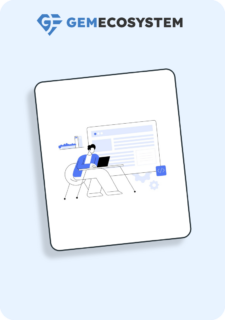API Automation using GemJar
GemJarGem Jar (Java Based Automation Framework) revolutionizes API automation with its codeless approach, allowing users to automate APIs effortlessly without writing a single line of code. Its minimal dependencies and customized reporting capabilities make it a compelling choice in the API testing landscape. One of the key use cases includes API automation and building health checks.
Key features of GemJar in API Automation:
1. Codeless Automation: Eliminates the need for coding, enabling users to automate APIs seamlessly without writing any code.
2. Post Assertions: Provides users the flexibility to validate the correctness of API responses through post-assertions, ensuring the expected outcomes.
3. Health-Check Automation: Supports the automation of health checks, enabling users to verify the reliability and stability of APIs.
4. Customized Reporting: Provides options for customized reporting, allowing users to generate detailed and tailored reports for API test executions.
5. Error Identification: Facilitates easy identification of errors through clear and concise reporting, aiding in quick issue resolution.
6. Email Reports Generation: Streamline project communication with timely, detailed email reports automatically generated after each test case execution, fostering collaboration and enabling swift issue resolution.
7. Sequential and Parallel Execution: Multiple test cases can be actively executed either in parallel or sequentially, enhancing efficiency through parallelization or ensuring specific order requirements through sequential execution.
Why choose GemJar for API automation?
1. Minimal Dependency: Integration with projects is straightforward and can be done with inclusion of tool dependency in any build management tool.
2. Ease of Learning: Designed for simplicity, the tool minimizes the learning curve, making it accessible to users with varying levels of technical expertise.
3.Timesaving: The codeless approach and simplified execution process save time, allowing teams to focus on testing and validation rather than coding.
4. Efficiency: Enhances efficiency by providing a streamlined and user-friendly interface for API automation tasks.
5.Scalability: Suitable for both small and large-scale API automation projects, adapting to the varying needs of different applications

